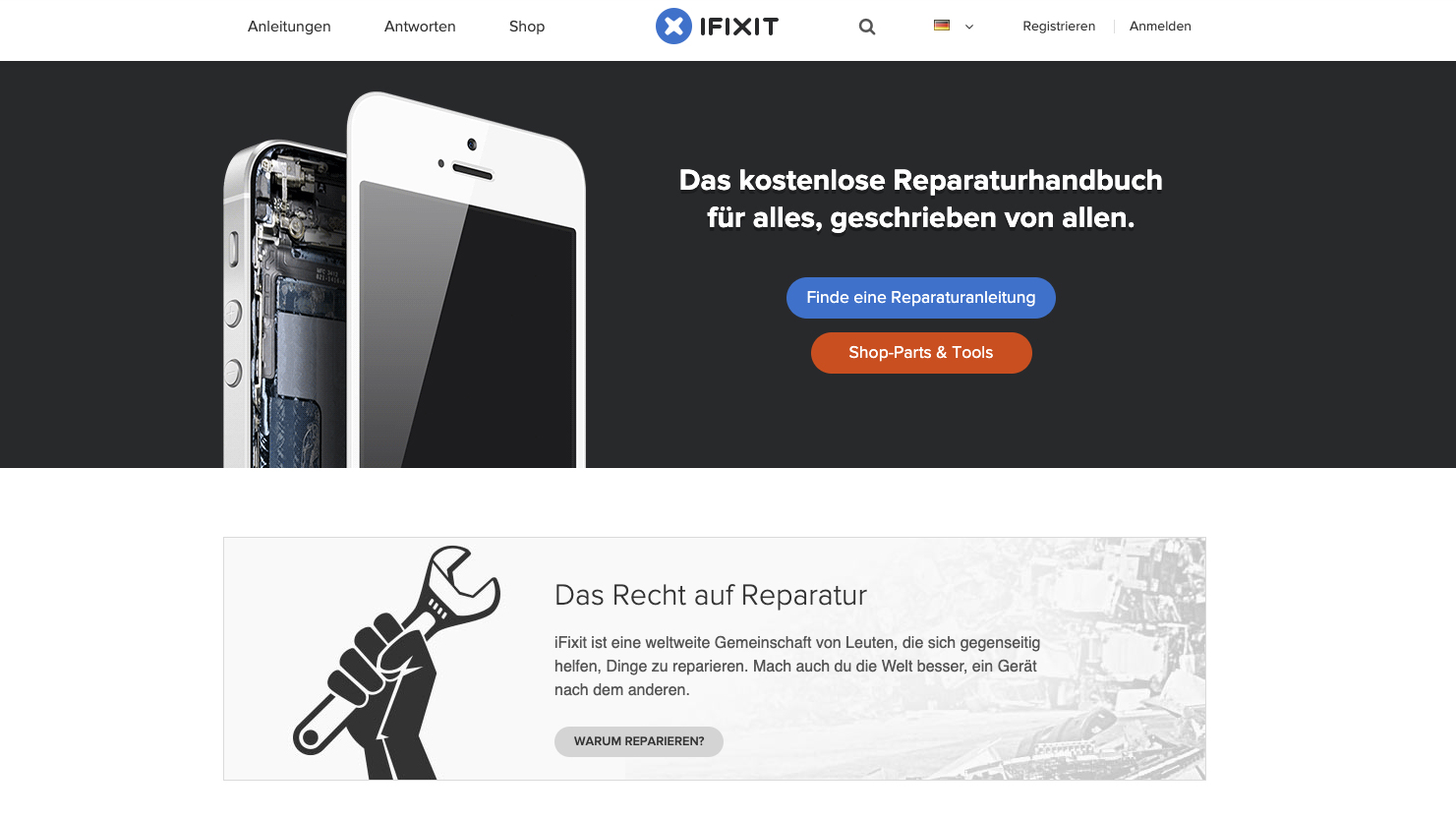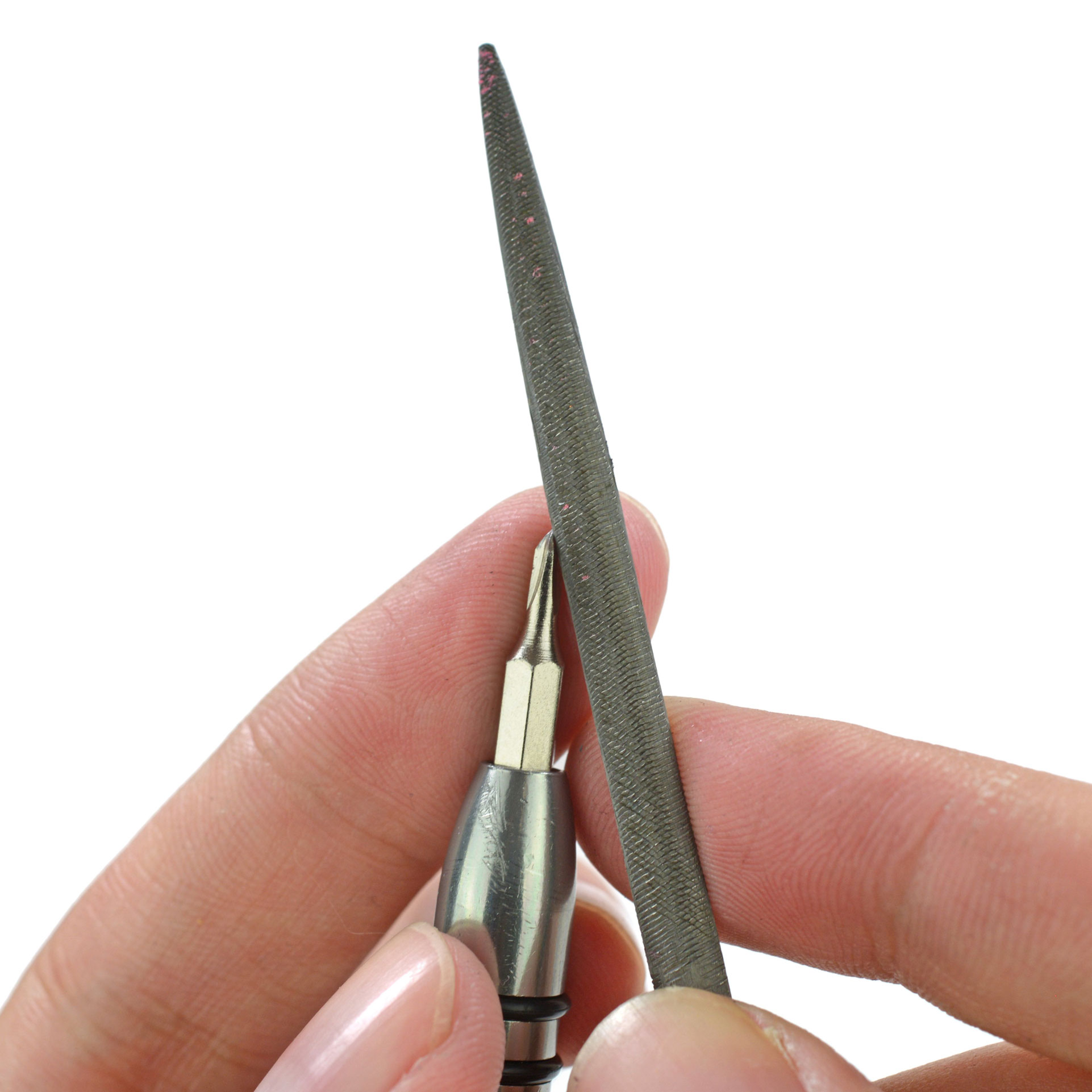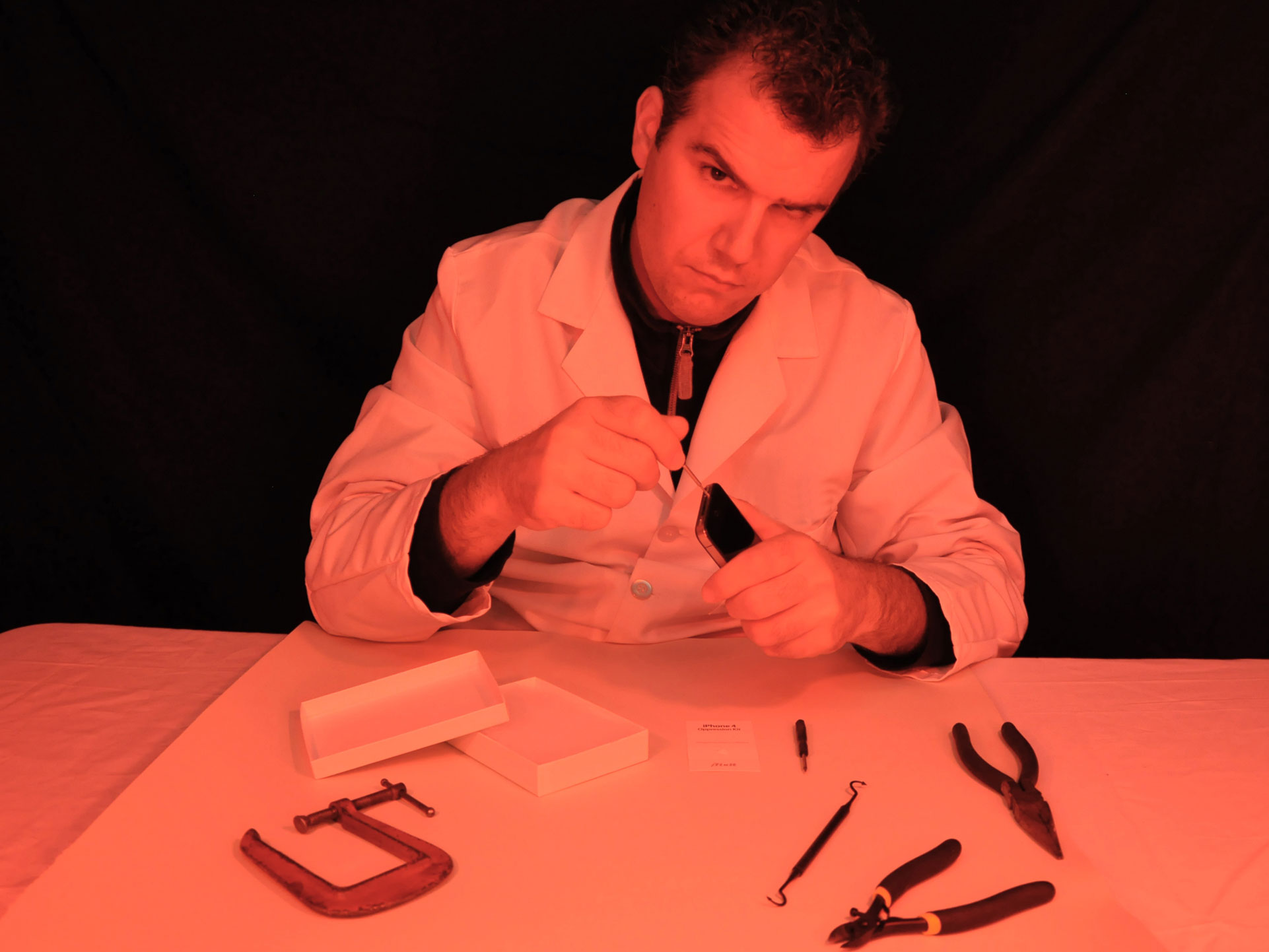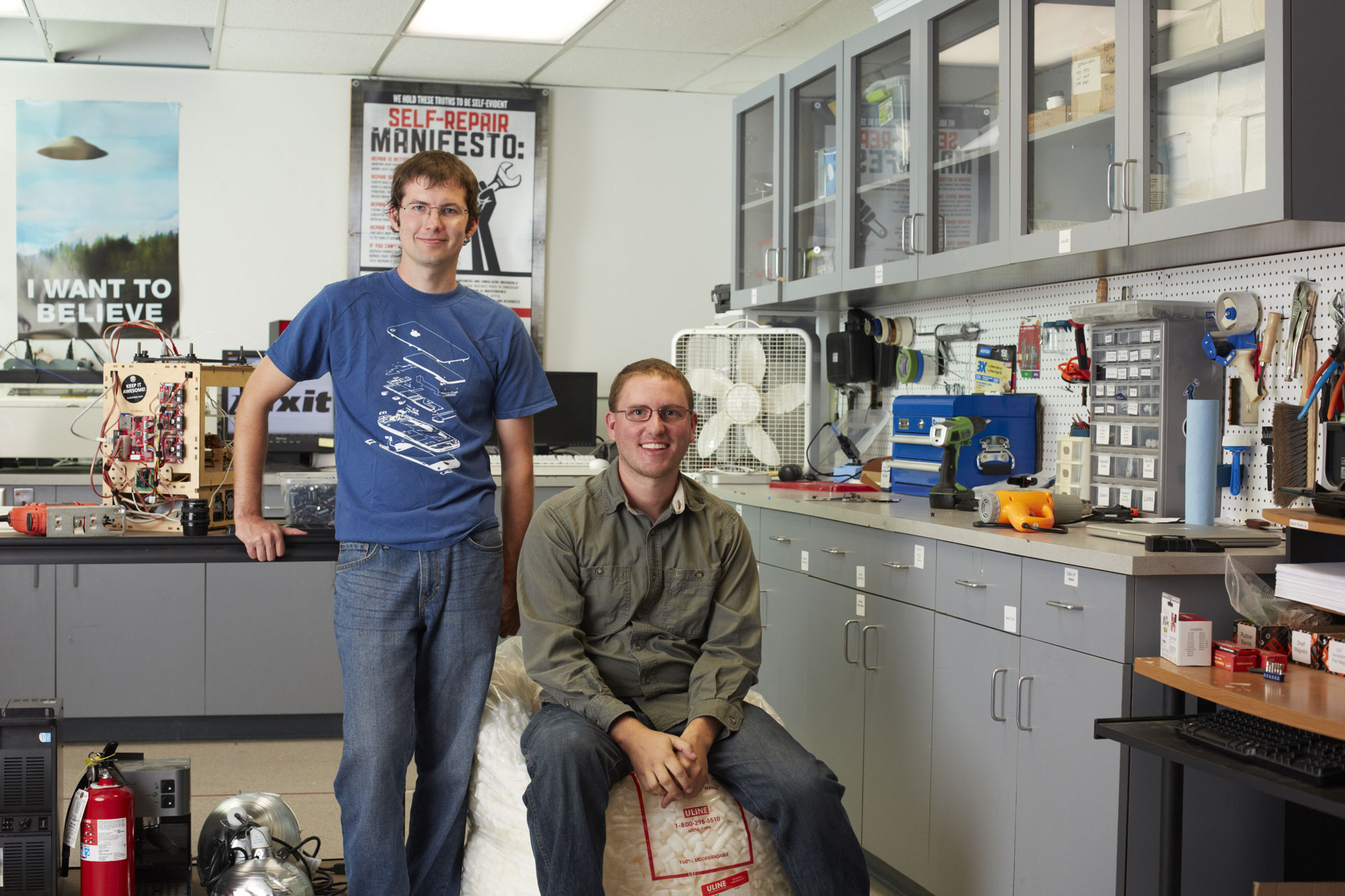In 2023, iFixit celebrates its 20th Anniversary. All year long, we’ll be sharing stories, photos, and milestones to commemorate everything that got us to where we are today.
Bring yourself to the way-back times of 2003. You’ve watched Lord of the Rings: Return of the King four times in theaters, you’re bopping to the Black Eyed Peas (or maybe the White Stripes) on your iPod. Things would be going great—except that your PowerBook is busted and your only resources are nerdy friends on AIM (or maybe Trillian). Enter: iFixit.
While we’re still just as excited to watch Lord of the Rings (extended editions, obviously), a lot has changed in 20 years, from our name and logo, to the repair landscape at large. So let’s take a stroll down memory lane.
Where We Started

Necessity, they say, is the mother of invention—and for college students, the father of invention is probably a shoestring budget. In 2003, Kyle Wiens and Luke Soules found themselves with a broken iBook G3. Replacing the busted power port wasn’t easy, especially with no instructions, but they managed to succeed with minimal broken tabs and lost screws.
And with that, a new skill was born. Sure, it was tough to fix Mac laptops, but it was possible once you knew how, and if you could find parts. Kyle and Luke began harvesting parts from partially broken laptops and selling them online. The mystique of the Mac laptop had been broken for them, but that initial frustrating repair still nagged. It could have been so much easier with a proper repair manual, and if the manufacturers wouldn’t do it, well, we can. The pair began making repair manuals and posting them online. The parts they sold no longer required prior expertise or a gamble to install. The parts came with instructions that anyone could follow. Now that’s what marketers call a “value add.”
It would be years before iFixit had a true office—from shoebox, to dorm closet, to spare room, iFixit has changed in more than just location.
Things That Have Changed
The iFixit Brand Through the Years

iFixit was actually born PB FixIt after the preeminent Mac notebook of the day: PowerBook. Fun fact: PB FixIt was founded just up the road from the city of Pismo, CA—also the name of a PowerBook G3 revision. As PB FixIt grew larger and more successful, it was able to outgrow the rather narrow moniker, and in 2006, it assumed its true name: iFixit.
While the ‘i’ has always been a nod to Apple’s various iDevices, Apple products are only a part of our business these days. Today, the ‘i’ is more of a call to action, a mantra for our customers and community members alike: “I fix it.” We know you can.
That is why in 2010, iFixit was relaunched as the free repair manual that anyone could edit. Not only can you fix it, but you can teach others, too. The community model has served the repair world quite successfully. Just two years later, 50,000 fixers had joined our community and collaborated on thousands of repair guides. Every day, we are grateful to everyone who engages in our not-so-small repair community. Together, you make up more than 2 million members and more than 90,000 guides.
A huge part of that success is due to the iFixit Technical Writing Project. As an engineering student, Kyle knew the importance of writing clearly and accurately—but many mechanically-inclined brains find themselves disengaged without hands-on activities. Instead of writing an instruction manual for an imaginary device, why not make real repair guides for real electronics, and help real people along the way? Since 2009, our stellar education team has helped tens of thousands of students at nearly a hundred separate universities to train the next generation of technical writers—and fixers.

We rang in our first decade with a final refresh: a new look and a new logo, featuring the symbol of accessible repair: a Phillips head screw, the most familiar symbol of standard tools. Our dream is to be as ubiquitous as the Phillips drivers in junk drawers across the world. And in the decade following our new logo, we made some incredible strides.
iFixit, and Teardowns, Go Global

In October 2013, iFixit Europe was born. iFixit was now, officially, an international effort. And as such, we added additional language support to the site: German, French, Spanish, Italian, and Dutch. With Stuttgart in Germany as a central European location, iFixit tools and parts started shipping to 28 European countries. And as the community and company grew, we were able to expand to Japanese and Chinese translation, and support portions of the site in languages like Korean, Portuguese, Russian, and Turkish. A global community indeed.

We did a fair bit of globe trotting, too. Those were the days iPhone launches generated long queues and week-long excitement. Since we sold parts, and were invested in teaching folk how to repair things, it made sense to be the first inside these new devices.
Starting with the original iPhone, we began to publish teardowns (originally called “first looks”) of new gadgets. We then share what we find with the world and offer our commentary about how difficult they’d be to fix. That’s how we ended up in Australia to tear down several iPhones—19 hours ahead of Pacific time, before Apple stores even opened back in the States. For the Xbox One launch, we even ventured to Middle Earth New Zealand!
Teardowns became synonymous with iFixit worldwide, and with teardowns, so did the Repairability Score. This nifty little number represents how much we struggled in the disassembly, and consequently provides our estimation of repair difficulty.
Years later, we were able to thank Australia for their time zone advantage. In 2017, local warehouses in Australia and Canada helped reduce costs so that iFixit was able to bring parts and tools to even more of the world.
The iFixit Tool Journey
As it turns out, teardowns, especially the tough ones far from home, are great inspiration for new tools. While in Japan to get our hands on an early iPhone 4, we discovered that Apple had locked away its insides with the now-famous pentalobe screw. This proprietary, five-pointed shape was so odd, and so small, that a driver simply didn’t exist. But iFixit makes do—so we reverse-engineered the bit so others could open up their iPhone, too.

Once we started making tools, we realized that we had the power to make electronics repair easier and friendlier for everyone. In 2011, we introduced the basic Pro Tech Toolkit. At that time, it was essentially just a collection of our favorite tools that we iteratively developed, based on our ever-growing experience. But our goal was to create the most versatile toolkit for electronics repair, and we dreamed of tools we’d never seen. In 2012, we established a product team to build and design the quality tools that didn’t exist in the electronics repair space.
Shortly thereafter, we reimagined the Pro Tech in a sleek black tool roll with components we designed ourselves, and two years later we reached our current magnum opus: 64 steel screwdriver bits and a wide variety of opening and prying tools. We’re continually improving our products and creating new ones to make repair easier: most recently, the all-new Anti-Clamp and the repair organizer FixMat. We’re always looking for ways to make your repairs easier—if you’ve been dreaming of a tool you can’t find, feel free to drop us a line.
Getting the right tools in our kits is a key step to making repair possible. But a lack of tools isn’t the only barrier to repair. From that very first PowerBook G3 repair, we’ve been frustrated by how often manufacturers get in the way. They like to claim that repair information is proprietary, refuse to sell parts, and use sneaky software tricks like parts pairing to keep repair locked away in their own authorized shops.
Winning the Right to Repair Battle
When iFixit was founded, the obvious challenges for repair were parts, repair information, and the proper tools. And while that’s still the foundation of any good repair, sometimes things get a bit more existential. Sometimes manufacturers decide that you shouldn’t be able to fix things—either by making unfixable products or by making those fixes illegal—and sometimes they say you don’t own them at all. So naturally, iFixit has been advocating actively for Right to Repair since our inception.
The truths proclaimed by our Repair Manifesto—published more than a decade ago—still hold true: “If you can’t fix it, you don’t own it.” We’ve been calling out bad practices wherever we find them and fight against laws that would restrict access to repair.
In the early 2010s, we were part of a campaign for the “Unlocking Consumer Choice and Wireless Competition Act” that got rid of unlimited carrier locks for smartphones. In 2015, we worked to put pressure on the US Copyright Office, with advocates at the Electronic Frontier Foundation and Public Knowledge. This pressure led the Copyright Office to create an exemption that made it legal to unlock phones, tablets, and wearables. But despite this exemption, manufacturers continue to find ways to hide repair access behind overreaches of copyright law. So we will keep fighting until the legal reality around the world matches what we know: Repair isn’t copyright infringement.
The unlocking fight catapulted us into the world of repair-friendly legislation, and we’ve found a lot of room for improvement. Since 2015, we’ve worked to support Right to Repair laws in nearly every US state, aiming to secure our access to parts, tools, and documentation for everything. That fight quickly went global.

In 2021, the EU made great strides towards sustainable products, rolling out the French Repairability Index—sibling in spirit to iFixit’s Repairability Score. Right to Repair is on the agenda worldwide, with New York State passing the first electronics Right to Repair law and the EU establishing new ecodesign regulations and battery replaceability requirements. Canada, Australia, and India all have Right to Repair legislative developments underway.
We’ve picked up some great allies, including the expert advocates at the Public Interest Research Group, the hundreds of repair industry members of Repair.org, and the security experts at SecuRepairs. Around the world, community repair groups like Repair Cafe International and Fixit Clinic share our mission of teaching the world to fix stuff.
Manufacturers have clearly noticed the turn of the tides. In 2020, the impossible happened: Apple announced a self-service repair program. Others followed suit, either launching their own repair networks, or working with iFixit to provide genuine parts solutions. There are even companies launching repair plans with their new products—Framework, Valve. Companies like iFixit, and long-time sustainable manufacturer Fairphone, have been repeatedly proven correct. The future is repairable.
We’ve come a long way, but we’ve got a lot to accomplish before our Repair Manifesto describes reality.
Things That Have Stayed the Same

For all the change and the challenge, we’ve managed to stay remarkably ourselves. Kyle and Luke still run the place, and can be seen in the office all the time—they’re a little older now, but still just as nerdy. And we still have the best allies in the world: all of you. To celebrate what you do, we’d like to reward the year’s top fixers through our Repair Hero of the Year contest. So get some credit for everything you’re already doing; you deserve it.
Our community is incredible, and too huge to fully enumerate. From longtime forum members, to dedicated translators, crazy cool fixers, and our dearest collaborators—looking at you PIRG, EFF, and The Repair Association—we’re incredibly lucky to know you. Together, we’ve fixed a lot. But we can’t stop yet—the world still needs fixing.
The Next 20 Years of iFixit

We’re more hopeful than we’ve been in a long time—challenges and opportunities abound. Let’s wrap up our vicennium with our hit list for the next ten years. From our perspective, challenges and opportunities may well be the same thing—goals.
- Fix Parts Pairing: Even when parts are available, repairs are increasingly locked down due to mounting software barriers like parts pairing. Some calibration can be safely done from home—Apple lets you do it (if you buy parts from them alone). Other pairing issues are unnecessary, or plainly meant to protect repair monopolies.
- Enshrine Strong Repair Protections: Beyond electronics and without exclusion, everyone should be able to fix any thing. Laws like New York’s Fair Repair bill and Colorado’s wheelchair repair laws are excellent, but are only pieces of the puzzle.
- Make Repair a Lifestyle: Repair needs to be the default. It’s the most important ‘R’ for sustainability, for jobs, and for your wallet. It needs to be the first line of defense, and the first thought in product design. Whether it’s globally accessible and translatable guides on iFixit, greater shipping coverage, or the next new TikTok trend—we’re looking to make repair bigger than ever.












37 Comments
Whoo hoo. 20 years! Lets go for 30
Corban Bell - Reply
Well done fellows and a hardy thank you for the leadership! Travers Edwards
Travers Edwards - Reply
I've been apart of the iFixit community for almost 2 years, and I am so glad to be apart of such an incredible group of people.
Jacob Mehnert - Reply
Happy Birthday with many more iFixit years to come
Richard Sweeting - Reply
Awesome, congratulations on getting to this point and continuing to build on past experience! Just goes to show what can be achieved with hard work and determination.
Andrew - Reply